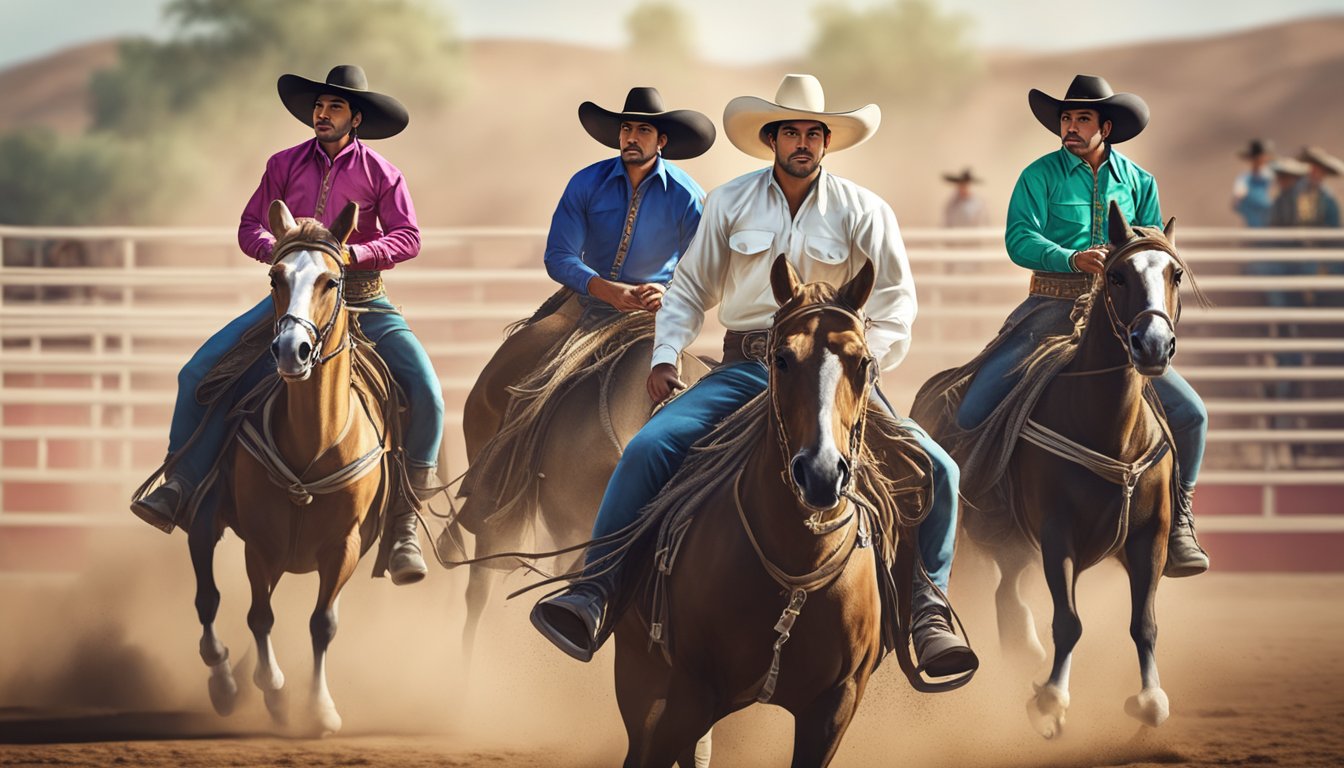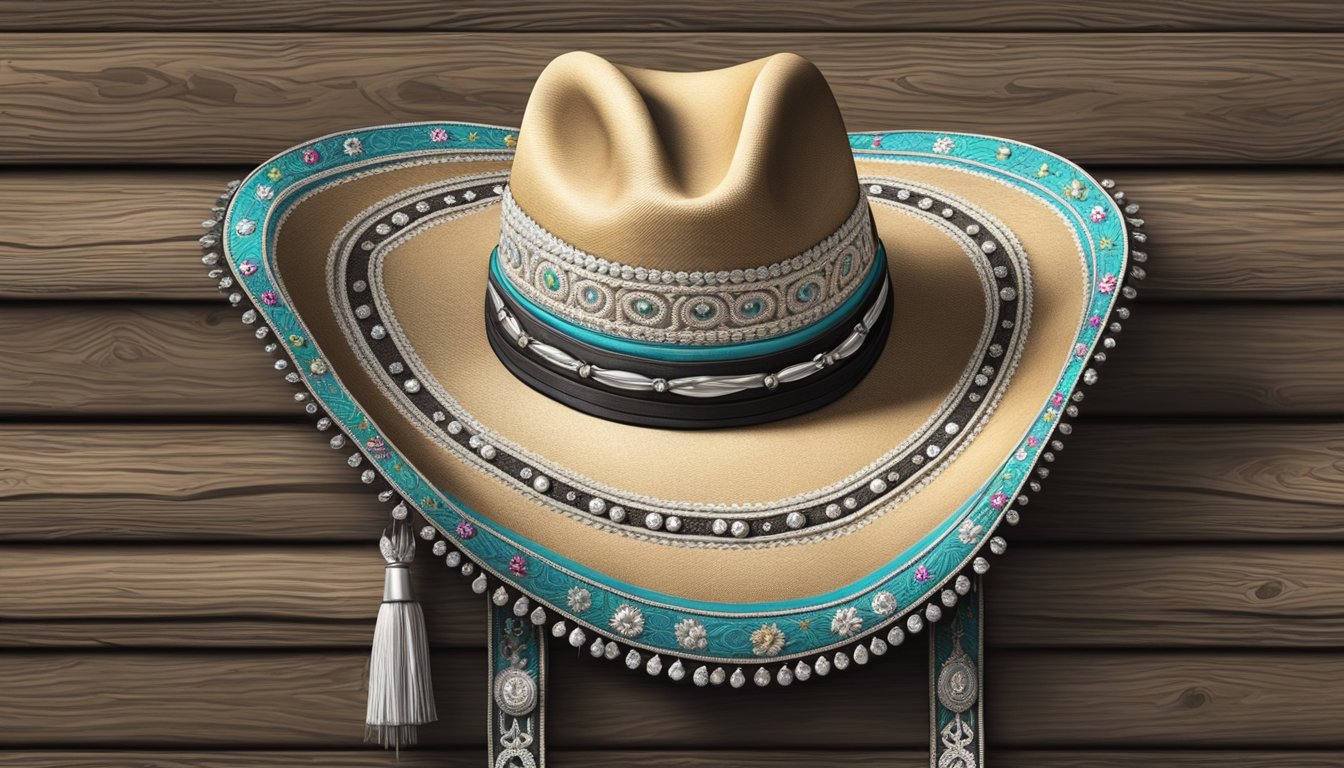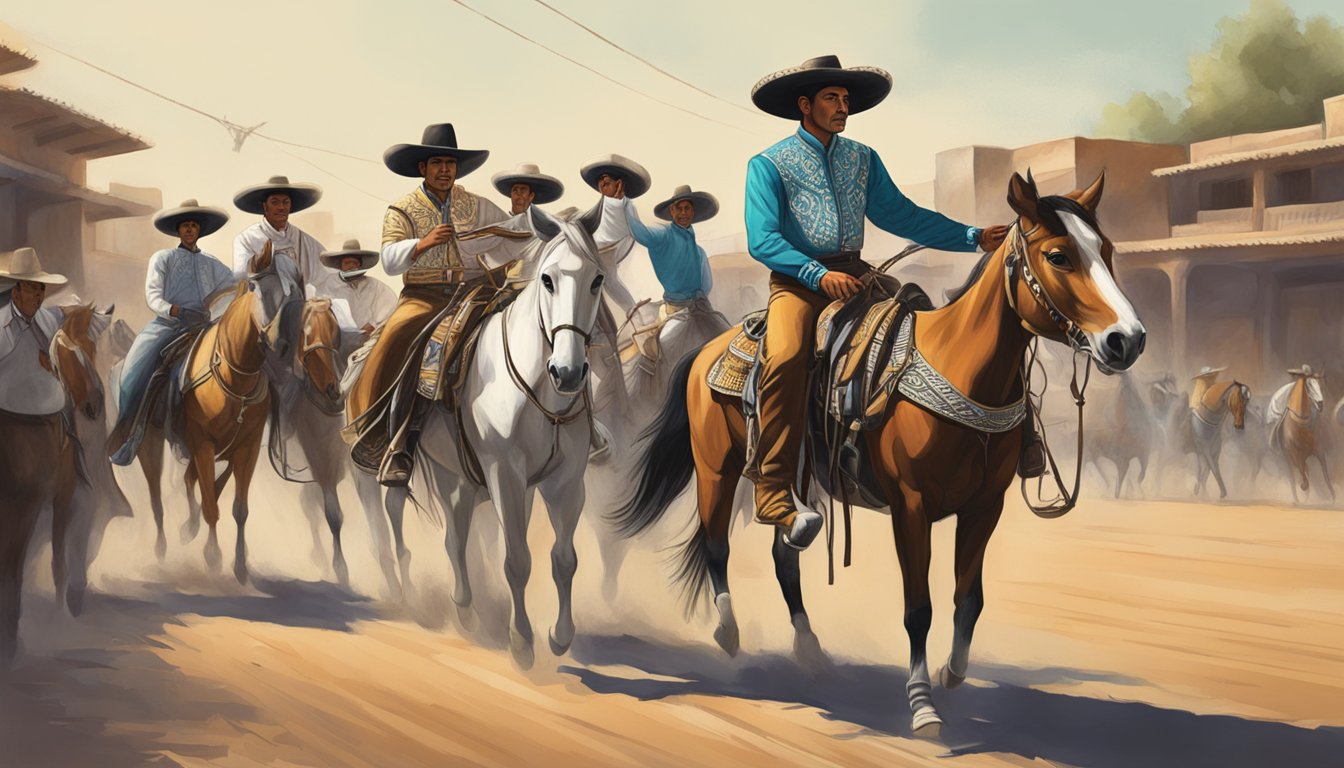No Products in the Cart
The Charro is an iconic symbol of Mexico, embodying a rich heritage that harks back to the early days of Spanish colonization. These skilled horsemen were the Mexican equivalent of the cowboy, distinguished by their flamboyant attire and the charrería, a discipline encompassing equestrian activities, cattle work, and roping techniques. Steeped in tradition, the Charro has become an integral part of Mexican culture, representing the blend of indigenous and European customs that characterize the nation's history.

Originating during the Spanish conquest, the tradition of the Charro was primarily established by the ranch owners who dressed their cowboys in distinctive clothing to denote status. As time progressed, the Charro's role evolved, especially during the Mexican War of Independence, where they demonstrated their riding prowess on either side of the conflict. Their influence expanded beyond the battlefield into the local communities, with their skills becoming a focal point of celebration and eventually, a national sport.
The history of Charros goes beyond their renowned horsemanship and into the cultural fabric of Mexico. This history intertwines with other aspects of culture, including the culinary tradition like churros, a popular treat thought to have its roots in Spain. These rich traditions, from the open range to the kitchen, have painted a vivid picture of Mexican identity—one that continues to resonate with pride and passion.
In exploring the vibrant history of Mexico, the charro stands out as a symbol of cultural heritage and national pride. This section will take you through the origins and key developments of the charro, from its early history to its status as a cultural icon, and the transition to contemporary times.
The charro tradition has its roots deeply embedded in the history of Mexico, tracing back to the Spanish Conquest. Initially influenced by the Spanish Shepherds and the Churra sheep from the Iberian Peninsula, both the Spanish brought over their own equestrian and livestock management customs to what is now Mexico. Over time, the native Mexicans and mestizos adopted and adapted these traditions. During the Mexican War of Independence, charros played a significant role serving in various armies, illustrating their growing importance in Mexican society.
After independence, charros transitioned from military figures to become symbols of national identity. They retained their iconic attire, initially influenced by the Spanish Conquistador style, yet over time it evolved to reflect both the ethos and the aesthetics of the Mexican people. As the charros became emblematic figures, their image was further popularized in cultural events and media, elevating their status as national icons.
The modern era saw the charro sport of Charrería become institutionalized with the establishment of the Federation National de Charros. This movement transformed a once-grassroots practice into a formally recognized national sport, involving activities such as bull riding and roping. Traditional charro skills and attire continue to be showcased in charreadas, today regarded as celebrations of Mexico's heritage.
The charreada is an emblematic tradition of Mexico, frequently regarded as the country's national sport, illustrating the skills and heritage of the charro. This celebration of horsemanship has its roots deeply embedded in Mexico's history, originating from the competitions of skill on the large haciendas.
The charreada is often compared to a Mexican rodeo, a series of events where charros display their equestrian skills in a formalized competition. It originated in the 16th century, evolving from the ranch work and lifestyles of the haciendas. Today's charreadas consist of up to 10 different events where charros, clad in traditional charro suits, demonstrate their dexterity and mastery in horse handling and roping techniques.
Charreada events are a rich blend of pageantry and athleticism, including:
Each of these events requires intense practice and a strong bond between the charro and their horse.
The charreada is more than a sport; it is a living symbol of Mexican culture and history. The customs and the iconic charro suit have been influenced by historical events such as the Mexican Revolution. As charreadas are communal events, they nurture social bonds and are seen as a celebration of identity, especially relevant after the Mexican Revolution, which led to the formation of the National Association of Charros to preserve and promote the charrería. Now institutionalized as Mexico’s national sport, the charreada continues to be a proud display of Mexican heritage.

Charro attire is more than just clothing; it is a rich tapestry woven from the threads of Mexican history and identity, representing both tradition and national pride.
The Charro Costume consists of several distinct elements, each playing a crucial role in its overall aesthetic and functionality:
Each piece of the Charro Attire exemplifies exquisite craftsmanship. The making of these costumes is a time-honored skill, often passed down through generations. The embroidery and leatherwork highlight the charro's skill and dedication to their culture.
Wearing the Charro Costume transcends personal style; it is an expression of cultural identity and honor. The attire is deeply interwoven with national celebrations and regional pride, often seen during festivals and competitive riding events known as "charreadas."
Charros play a vibrant and symbolic role in Mexican society, with their traditions deeply embedded in national celebrations and community festivals. They represent a cultural heritage stemming from historical horsemanship and rural life in Mexico.
In national celebrations, charros add color, tradition, and a festive spirit to the events. Their attire and performances are not merely for show but are a nod to their cultural significance. During these celebrations, charros are often seen on horseback, parading in their distinctive charro outfits, which include elaborately decorated jackets, pants, and wide-brimmed sombreros.
Mexican Independence Day is one iconic event where the presence of charros is especially prominent. On September 16th, they participate in parades and equestrian displays that commemorate the country’s freedom. Their participation is more than a spectacle—it serves as a reminder of the courage and skill of historic Mexican horsemen.
Aside from Independence Day, charros participate in revolutionary anniversaries and important state festivities, upholding the pride and spirit of Mexico.
At the community level, charros contribute to local festivals by showcasing charrería, the national sport of Mexico. These local events are sometimes intertwined with religious observances and often feature rodeo-style competitions that highlight the equestrian skills of the charros. They not only entertain but also pass down traditions, maintaining social cohesion among members of the Mexican community.

Charros, the iconic Mexican cowboys, face modern challenges while striving to preserve their cultural heritage and adapt to the contemporary landscape.
As the world moves rapidly into the digital age, charros have found new avenues to share their culture with a global audience. Social media platforms have become instrumental in showcasing charreadas—rodeo-like events that are integral to charro culture—and intriguing a new, younger audience. Yet, they must balance the allure of modernity with the essence of their traditions, maintaining the rigorous skills of horseback riding and roping that define them.
Within the global context, charro culture contributes to the rich tapestry of Global Mexican Culture. Despite facing pressures from globalization and shifts in societal values, communities work tirelessly to maintain the legacy of their craft. Initiatives like educational programs in communities across the U.S. West, as highlighted by Laura Barraclough, help to ensure that the history and skills of the charro are not lost to future generations. They see their role not just as performers but as guardians of an art form, intricately tied to the national identity of Mexico and cherished by Mexicans everywhere.
In exploring the rich tapestry of Mexican culture, the Charro tradition holds a significant place, weaving centuries of history, fashion, heroism, and community values into its narrative.
The Charro tradition originated with the Spanish conquistadors in the sixteenth century, evolving over time to become a symbol of Mexican identity. These Mexican horsemen adapted equestrian contests to create a sport that reflected their cultural values and skills.
Initially serving a practical role in the life of horsemen, the Charro suit has become a ceremonial garment. Embellishments and elaborate designs became part of the attire to reflect the wearer's skill and status. Over time, these suits have embodied the honor and spirit associated with Charrería.
Notable figures in Charrería include revolutionaries and presidents who embraced Charro values and customs. Agustín de Iturbide is often mentioned as a key figure, riding into Mexico City dressed as a Charro after the War of Independence, indicative of the Charros' prestige.
While both Charros and Vaqueros are skilled horsemen, Charros are associated with a formal style of riding and a ceremonial role in Mexican culture. Vaqueros, on the other hand, are more akin to cowboys, focusing on the practical aspects of cattle herding.
Charrería is more than just an equestrian sport; it's a cultural event. The practice was named an Intangible Heritage of Humanity by UNESCO in 2016, underscoring its cultural significance. Charros are revered for their courage, skill, and adherence to a strict code of honor.
Women, known as Escaramuzas, have played a pivotal role in Charrería, participating in teams and performing intricate riding maneuvers in traditional dress, which adds to the sport's pageantry and preserves the matriarchal aspects of Mexican heritage.